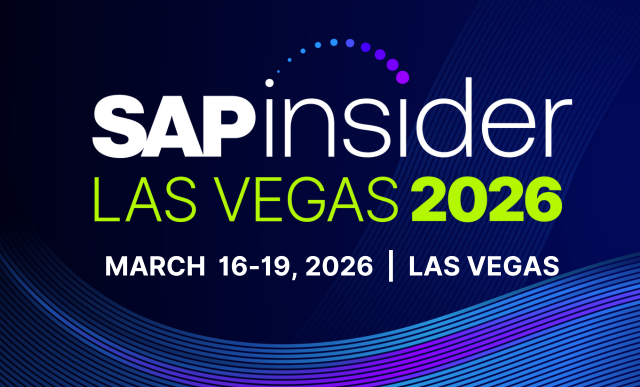Should You Upgrade or Replace Your Aging SAP P&S Software?
Meet the Authors
Key Takeaways
Manufacturers face a critical decision between upgrading existing maintenance planning and scheduling solutions or replacing them entirely, considering long-term costs and operational benefits.
User adoption is vital for the success of any new P&S system; involving key users in the decision-making process ensures that the solution meets their real-world needs.
Future-ready P&S solutions must integrate seamlessly with SAP while leveraging IoT and automation to enhance predictive maintenance capabilities and overall equipment effectiveness.
Many manufacturers today are at a crossroads with their maintenance planning and scheduling (P&S) solution for SAP. It’s a decision driven by end-of-life announcements and new technology. However, the big question isn’t if you need to act, but how. Should companies stick with what they know and upgrade, or is it time to rip off the Band-Aid and replace a system entirely?
During an SAPinsider webinar, Robert Hancock, Global Vice President of Sales at Sigga and a 15-year veteran in the SAP P&S space, gave a practical framework for making this critical decision.
Step 1: Follow the Money
At first glance upgrading your current system should be cheaper. But Hancock warned leaders to look deeper.
Explore related questions
“Sometimes, implementing an upgrade of your existing solution, in many cases, is almost the same as upgrading to a new solution in terms of difficulty,” Hancock explained. “Vendors often use an upgrade as leverage to move you from a perpetual license to a more expensive SaaS model, erasing your perceived savings.”
While replacing a tool often means a higher initial investment, it also opens the door for a lower total cost of ownership (TCO) and transformative gains. Therefore, when you calculate ROI, don’t look at software licenses only. Quantify the value of increased asset reliability, reduced downtime, and freed-up human capital.
Step 2: Put Your People First
This is the most crucial and most often skipped step. “A great system with low adoption is a failed system,” Hancock stated. “You need to focus on an experience that the users will actually want to use.”
Hancock tells a story of a company that decided to roll out a new tool without consulting the teams at their ten mining sites. “The guy came back to us and said, ‘We don’t really need to do that, because they don’t have a role in the decision.’ And we said, ‘Well, they might not have a role in the decision, but they’re going to have a role in the decision if they use it or not.’” Involving users early provides your must-have feature list and ensures you don’t overlook critical, everyday functionality.
Step 3: Define Your Non-Negotiables
According to Hancock, with user feedback, you can build a true list of requirements. Beyond the basics, think about the future and ask the following questions:
- Can your planners and schedulers work effectively when they’re not chained to a desk?
- Can the solution leverage data from IoT sensors to trigger work orders automatically?
- Does the platform incorporate AI for capabilities like auto-scheduling based on real-time capacity?
The answers to these questions can help choose a partner whose technology can adapt to the challenges of the next decade.
Step 4: Keep SAP as the Backbone
For most organizations running SAP, the enterprise system is the financial source of truth. Therefore, a P&S solution should enhance SAP Plant Maintenance (PM), not create a competing data silo.
“My advice, after doing this for a long time, is that you keep SAP as the backbone,” Hancock concluded. “Venturing outside the tightly integrated SAP ecosystem can lead to data delays and conflicting information. However, a seamlessly integrated tool provides a modern, user-friendly front-end that leverages the power and data integrity of SAP in real-time.”
What This Means for SAPinsiders
Based on the discussion, here are three critical takeaways for manufacturing leaders evaluating their P&S software.
Your P&S tool must bridge the maintenance-production divide. In manufacturing, there’s an eternal conflict between production’s need for uptime and maintenance’s need for downtime to service assets. An aging or disconnected P&S tool exacerbates this tension. Thus, your evaluation shouldn’t just be about maintenance efficiency; it must be about improving Overall Equipment Effectiveness (OEE). A top-tier P&S solution like Sigga’s provides a shared, transparent view for both teams.
Data lag is a production killer. The latency between your planning tool and SAP can have devastating consequences on the shop floor. This scenario is a direct cause of wasted wrench time and extended line-down situations. Thus, for manufacturers, a P&S solution must have live, seamless integration with SAP PM and MM (Materials Management).
Future-proof your operations by planning for IoT and automation. Your evaluation must look beyond simple drag-and-drop scheduling and assess the platform’s readiness for Industry 4.0. Thus, the goal is to move from reactive or preventive maintenance to a predictive model. A future-ready P&S platform must have an open architecture that can receive alerts from shop-floor equipment.





